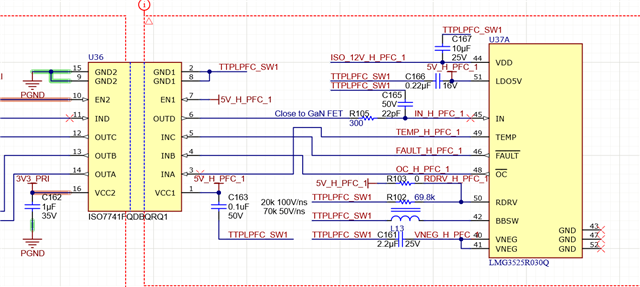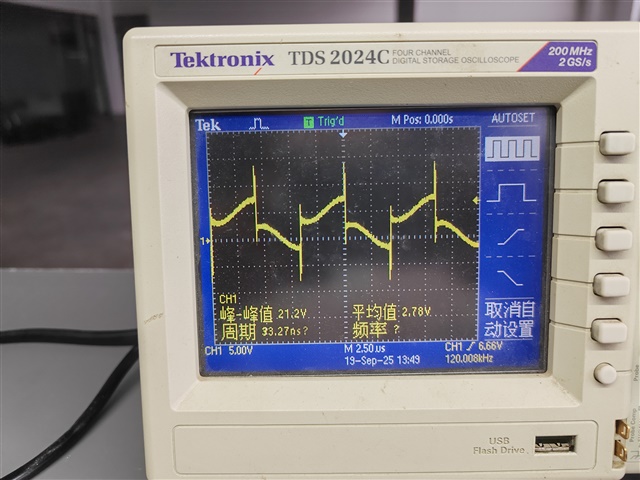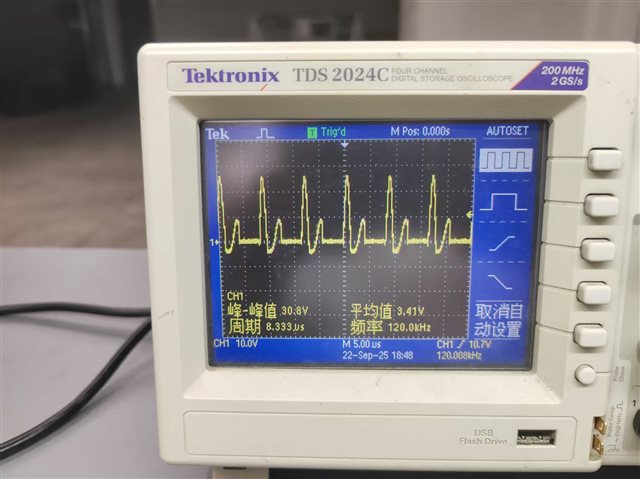During Lab 1, the PFC (Power Factor Corrector) could normally boost the output voltage when the input DC voltage ranged from 0 to 20V. However, when the input voltage exceeded 20V, after the output voltage surpassed 50V, the output voltage dropped sharply. Within a few seconds, it fell to the same level as the input voltage. I don't understand what the problem is, and my experimental group is currently investigating the issue.
When I adjusted the input voltage from 0V to 10V, I observed that the driving waveform of the upper switch in the GaN PH1 branch was distorted, while the driving waveform of the lower switch remained normal. What could be the cause of this, and would it lead to the aforementioned issue?




